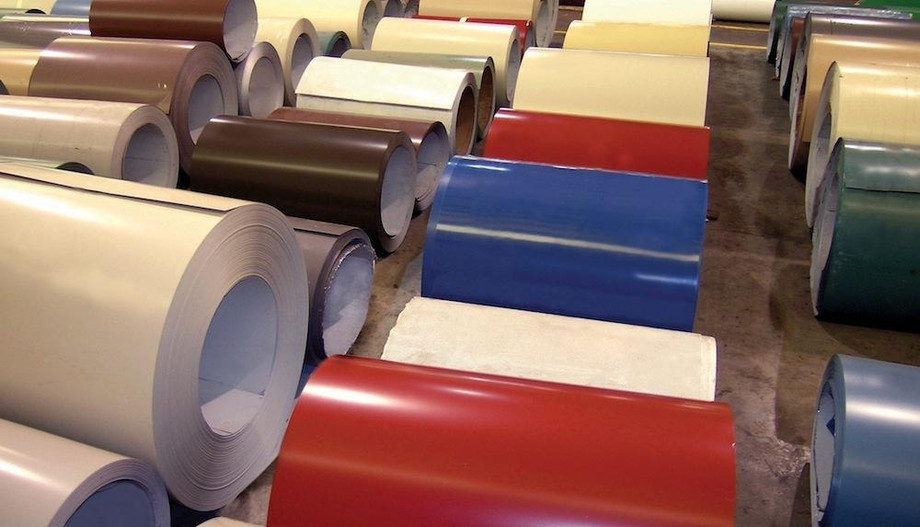What are Coil Coatings?
Coil coatings, also known as prepainted steel or coil-coated steel, are thin-film coatings applied to steel or aluminum strips prior to fabrication or shaping into finished products like roofing, siding, rain gutters, etc. The thin-film of protective paint is applied to coil steel or aluminum through a continuous coil coating line. This allows for a highly uniform and consistent paint finish.
Benefits of Coil Coatings
Coil Coatings offer numerous advantages over other metal finishing methods:
Superior Durability: Coil coatings form a tough, long-lasting barrier that protects the substrate from corrosion. This allows coated metal products to maintain their appearance and integrity for many years with minimal maintenance. The cured paint film acts as a shield against weathering, UV degradation, chemicals, abrasion and other environmental factors.
Consistent Quality: The continuous coil coating process ensures an exceptionally uniform finish. It allows for tight control over film thickness and defects. This translates to consistent long-term performance across large production runs.
Wide Color Options: Coaters can customize nearly any color and incorporate metallic or other special effect pigments into the topcoat. This ability to match any RAL or PMS color standard expands design possibilities.
Low Lifecycle Cost: On a lifecycle basis, coil-coated metals are more cost-effective than alternatives. The upfront material and installation costs are offset by decades of lower maintenance and protection from premature replacements or repairs.
Environmentally Friendly: Most coil coating resins and pigments are made from renewable plant-based sources like soy or pine resin. Many facilities also reuse solvents to minimize emissions. Cured paint films do not leach or emit VOCs. This makes coil-coated products a more sustainable choice.
Superior Formability: Coil coatings maintain excellent adhesion even after stringent metal forming or fabrication processes like roll forming, press braking, bending etc. The paint does not crack or peel from moderate shaping.
Types of Coil Coatings
There are three main types of coil coatings utilized:
Polyester Coil Coatings: This accounts for the majority of global coating consumption. Polyester resins form durable films with good weatherability, corrosion resistance and formability. The color retention is also good.
PVDF (Polyvinylidene Fluoride) Coil Coatings: Considered the premium option, PVDF-based systems offer the highest performance for applications where long-term color and gloss retention in severe environments is critical, like architectural components. However, they are more expensive than polyester.
Siliconized Polyester Coil Coatings: A hybrid system combining polyester with silicone or fluorocarbons to provide the benefits of both. They exhibit enhanced gloss retention, UV resistance and flexibility compared to regular polyester but are more cost effective than pure PVDF coatings.
Coil Coating Process
The basic steps involved in coil coating are:
Pretreatment: The steel or aluminum coil is chemically cleaned and conditioned to prepare the surface for painting. This involves alkaline cleaning, acid treatment and passivation to achieve optimum adhesion.
Primer Coat Application: A corrosion inhibiting primer is applied to seal and protect the metal substrate. This can be a self-crosslinking acrylic, epoxy or polyester-based primer.
Topcoat Application: The functional and aesthetic topcoat layer is applied next. Options include polyester, PVDF or siliconized polyester coatings in the desired color and gloss.
Curing: The wet paint is fully cured by passing through a gas-fired or induction oven. This crosslinks the polymers to form a hard, durable film.
Quality Inspection and Coil Rewinding: The finished coil is visually and performance tested before rewinding onto a fiber core for shipping or further processing.
End Uses of Coil Coated Products
Buildings and Construction: Major applications include roofing, siding, rain gutters, fence posts, signboards and architectural panels. The weather resistance protects structures for decades.
Transportation: Trailers, RVs, truck caps, commercial vehicles, railway wagons, shipping containers etc. benefit from coil coating’s formability and durability.
Appliances: Refrigerators, washing machines, AC units routinely use prepainted steel for components like cabinets and panels.
Furniture: Outdoor and sports equipment, garden furnishings, bus stop shelters, billboards etc. all employ coil coated steel and aluminum sheets.
Benefits Driving Growing Demand
Demand for coil coatings remains robust driven by their tangible benefits over alternative metal finishing options. Key factors fueling consumption include:
- Ongoing infrastructure development worldwide for buildings, transport, energy industry boosts coated metal usage.
- Increasing consumer preference for low maintenance exterior materials increases demand for prepainted metals in construction, appliances etc.
- Tighter environmental regulations encourage use of more sustainable coil coated steel over unprotected metals prone to early replacement.
- Emerging applications in new energy, telecom towers, solar panels and evolving construction methods open new avenues for value-added coil coated products.
- Cost-competitiveness allows coil coatings to supplant more expensive stainless steel, aluminum mill finishes or decorative laminates in some applications.
Coil coatings have revolutionized metal manufacturing by providing an ubiquitous, consistent and high-performance barrier coating solution. Their versatility,durability, sustainability credentials and ability to protect metal substrates for decades continue driving their popularity and wide adoption across many industries globally. Innovation in resin technologies also keeps enhancing coil coatings attributes, ensuring strong future growth prospects.
Get This Report in Japanese Language -コイルコーティング
Get This Report in Korean Language -코일 코팅
Read More Articles Related to this Industry –
Sustainable Agrochemicals: Innovations for Eco-friendly Farming
Types of Agrochemicals and Their Role in Modern Farming
About Author:
Priya Pandey is a dynamic and passionate editor with over three years of expertise in content editing and proofreading. Holding a bachelor's degree in biotechnology, Priya has a knack for making the content engaging. Her diverse portfolio includes editing documents across different industries, including food and beverages, information and technology, healthcare, chemical and materials, etc. Priya's meticulous attention to detail and commitment to excellence make her an invaluable asset in the world of content creation and refinement.
(LinkedIn- https://www.linkedin.com/in/priya-pandey-8417a8173/)

